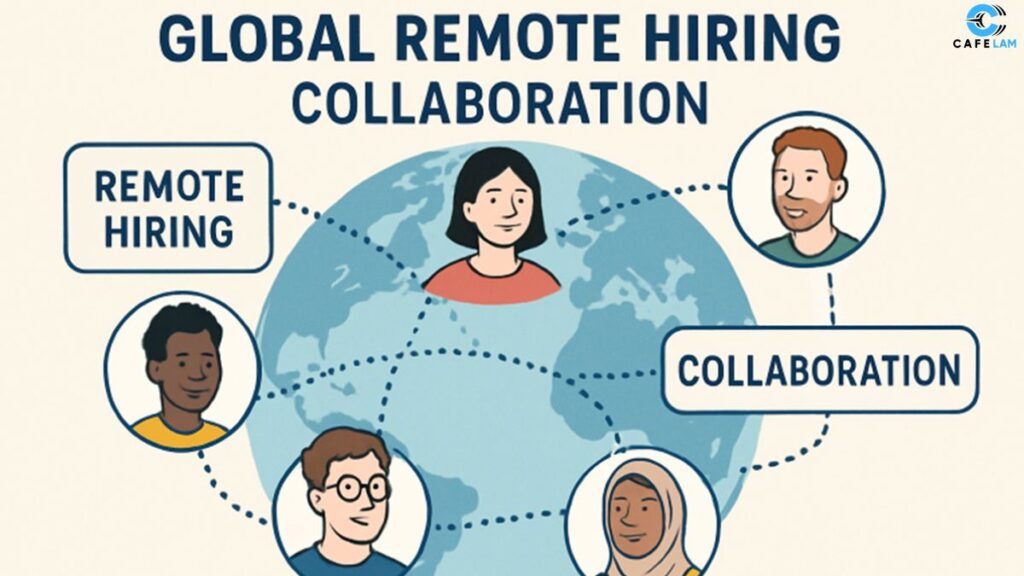Key Takeaways:
- Artificial Intelligence (AI) is revolutionizing recruitment processes, leading to faster and more accurate hiring decisions.
- There’s a growing shift towards skill-based hiring, emphasizing competencies over formal degrees.
- Remote work has expanded the global talent pool, offering both opportunities and challenges for employers.
- Enhancing the candidate experience is crucial for attracting and retaining top talent.
- Data-driven strategies are becoming essential for effective talent acquisition.
Introduction
The landscape of talent acquisition has undergone a dramatic transformation over the past decade, with organizations facing a whirlwind of changes in workforce dynamics, expectations, and technologies. No longer limited to traditional recruitment channels, modern companies are compelled to innovate and rethink nearly every aspect of their talent strategies. Today, finding and retaining the best employees has evolved into a competitive race centered on adaptability and forward-thinking solutions. This new reality places added pressure on companies to recognize the importance of strategic partnerships, including those with leadership development organizations, in building future-ready teams that drive sustainable success.
As recruitment evolves, new technologies and approaches are emerging to address talent shortages, changing candidate expectations, and shifting organizational priorities. The rise of innovative platforms and data-driven techniques means companies cannot afford to be complacent. Progressive businesses are investing in tools and strategies that help them stand out, enhance candidate engagement, and ultimately gain a competitive advantage in the war for talent. The ability to adapt swiftly to these ongoing shifts can mean the difference between leading the market and falling behind the talent curve.
The Rise of AI in Recruitment
Artificial Intelligence is no longer just an innovation buzzword in recruitment; it’s now a tangible driver of efficiency and effectiveness. AI-powered tools have revolutionized resume screening, candidate sourcing, and initial assessment stages, dramatically reducing time-to-hire and streamlining repetitive administrative tasks. For example, natural language processing and machine learning algorithms identify key qualifications and rank applicants, removing hours of manual labor that previously bogged down HR teams. According to a 2024 report by iHire, 14.7% of employers now use AI in recruitment, up from 4.9% in 2023, indicating a significant increase in AI adoption within hiring processes.
Automated chatbots manage candidate inquiries in real-time, delivering quick responses to common questions and keeping candidates engaged throughout the process. Predictive analytics can forecast which applicants are likely to succeed based on historical hiring data and key performance indicators, helping organizations refine their decision-making. These innovations empower recruiters with actionable insights, reduce human biases, and help ensure only the best-fit candidates advance through the hiring pipeline. By integrating AI into every stage of recruitment, companies are also freeing up valuable recruiter time, allowing talent teams to focus on building relationships and providing thoughtful candidate experiences.
Emphasis on Skill-Based Hiring
The demand for specific, job-related skills is shifting the focus away from traditional degree requirements. As work and learning patterns change, this skill-based hiring approach allows organizations to identify candidates with direct capabilities necessary for particular roles—regardless of where or how they acquired those skills. Between 2018 and 2023, roles in fields like AI and data science grew by 21%, while the frequency of mandatory degree requirements decreased by 15%. Employers are now relying on skills assessments, certification programs, and practical work samples to gauge the true abilities of candidates, often alongside or in place of formal educational credentials.
This strategy not only broadens the available talent pool but also enables companies to address emerging business needs quickly. By emphasizing competencies—such as analytical thinking, technical proficiency, or creative problem solving—organizations can hire the best person for the job regardless of educational background. Importantly, skill-based hiring supports diversity, equity, and inclusion initiatives by recognizing and validating talent in nontraditional formats. This approach opens doors to candidates from varied backgrounds, including those without access to conventional educational routes, and fosters a richer, more dynamic workforce.
Expanding the Talent Pool Through Remote Work
The global embrace of remote work has fundamentally altered the boundaries of recruitment and redefined what it means to attract the right talent. Remote work arrangements empower organizations to look beyond local markets and tap into a vast, diverse global workforce, allowing companies to source expertise from virtually anywhere in the world. This change has led to increases in productivity, innovation, and employee satisfaction, while providing cost savings on office spaces and overhead. For candidates, remote options make career opportunities accessible regardless of geographic location, broadening the reach for skilled professionals and underrepresented communities alike.
However, managing a distributed team introduces new challenges. Employers must now navigate complex cross-border legal requirements, coordinate work schedules across time zones, and ensure clear communication in virtual environments. Additionally, building strong team connections and company culture in a digital context requires deliberate effort—from virtual team-building events to regular check-ins and clear documentation of processes. Proactively addressing these issues is crucial for organizations aiming to maximize the benefits of remote work while avoiding potential pitfalls that can erode productivity and morale.
Enhancing Candidate Experience
Top talent is in high demand—and a seamless, positive candidate experience can be the differentiator that helps employers attract these sought-after individuals. In today’s fast-moving job market, candidates expect efficiency, clarity, and respect throughout the recruitment process. Virtual job fairs, video interviews, and interactive career portals are becoming standard tools in the recruiter’s toolkit. These digital methods demonstrate organizational agility and adaptability, important signals to career-savvy applicants. According to a 2023 article by the Financial Times, approximately half of all job applicants are now using AI tools like ChatGPT to craft their resumes and cover letters, indicating a significant shift in candidate behavior and expectations. Personalized communication, timely updates, and clear expectations all contribute to a positive impression, even for those candidates who may not ultimately receive a job offer. Organizations that fail to deliver a thoughtful, candidate-centric experience risk losing both top talent and employer brand equity, especially in an age when online reviews and social media can rapidly amplify negative feedback. Simply put, enhancing candidate experience is no longer optional; it’s a critical element of a successful talent strategy.
Data-Driven Recruitment Strategies
In the modern talent landscape, data analytics offers an indispensable foundation for effective hiring. Robust human resource information systems not only track the basics—like time-to-hire and cost-per-hire—but also provide in-depth analyses on sourcing channels, candidate quality, and diversity metrics. Advanced organizations are leveraging workforce analytics to gain predictive insights into future hiring needs and to inform workforce planning. By leveraging workforce analytics, organizations can optimize every stage of recruitment—from identifying top candidate sources to measuring time-to-fill and cost-per-hire. Metrics-driven strategies not only improve the efficiency of talent acquisition but also align recruitment outcomes with broader business objectives.
Organizations now have the tools to measure everything from the effectiveness of interview questions to the long-term performance of new hires. When used intelligently, these data points drive informed, strategic decisions and foster continuous improvement. In a highly competitive environment, the ability to test, refine, and optimize recruitment tactics based on real results strengthens both the short- and long-term health of the organization. Data-driven recruitment thus becomes not only a best practice, but a true game-changer for future growth and resilience.
Conclusion
Talent acquisition is rapidly evolving in response to new technologies, changing workforce expectations, and market pressures. Winning the talent war depends on the continuous adoption of AI-driven technologies, skill-based hiring, remote recruiting practices, enriched candidate journeys, and data-informed strategies. The organizations committed to innovation and adaptability are best positioned to build resilient teams poised for long-term success in this dynamic landscape. Ultimately, companies that view talent acquisition as a strategic, evolving discipline—and continue investing in the strategies and tools that support it—will be better prepared to thrive in an ever-changing global market.







